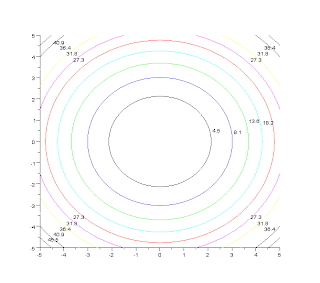This post is an answer for Agnes, who commented the last post:
I coded this script for simulating and problem where there is a source that sends packs with a specific probability, a queue that receives the source packs and stores them, with a maximum number of stored packs, and a destiny that receives the packs from the queue with another specific probability.
All interested ones can run the code and comment it.
Engineering and Scientific Computing with Scilab - Book
This script is a simple simulation of a queue of packs (or anything else) which there are a source, the queue and a destiny.I coded this script for simulating and problem where there is a source that sends packs with a specific probability, a queue that receives the source packs and stores them, with a maximum number of stored packs, and a destiny that receives the packs from the queue with another specific probability.
All interested ones can run the code and comment it.
N_packs = 15; //total number of packs P_send = 0.5; //probability of a pack to be sent P_process = 0.5; //probability of a pack to be processed N_queue = 10; //maximum number of elements in the queue N_sent = 0; //number of packs sent to queue N_line = 0; //number of packs in the queue N_processed = 0; //number of packs processed src = rand(N_packs, 2); //source packs dst = []; //destiny packs line = []; //queue processed = []; //processed packs while N_processed < N_packs, try plot(src(:,1) + N_queue + 2, src(:,2), '.g');
//plots source packs as green dots end; try plot(processed(:,1) + N_queue + 2, processed(:,2), '*k');
//plots the queue as line of blue dots end; plot(1:N_queue, zeros(1, N_queue), '.w'); //clears queue dots try plot(line(:,1), line(:,2), '.b');
//plots the queue as line of blue dots end; try plot(dst(:,1), dst(:,2), '.r');
//plots destiny packs as red dots end; if rand() < P_send then
//sends a pack with P_send probability if and([N_line < N_queue N_sent < N_packs]) then
//verifies the queue is full or all packs have been sent N_sent = N_sent + 1; N_line = N_line + 1; line(N_line,:) = [N_line 0]; processed(N_sent,:) = src(1,:); src = src(2:$,:); end end if rand() < P_process then
//processes a pack with P_process probability if N_line > 0 then
//verifies the line has at least one pack N_processed = N_processed + 1; N_line = N_line - 1; line = line(1:N_line,:); dst(N_processed,:) = -rand(1, 2); end end end




